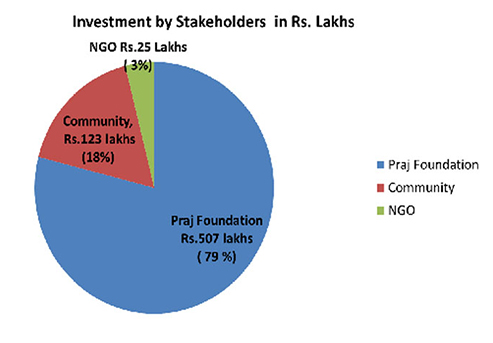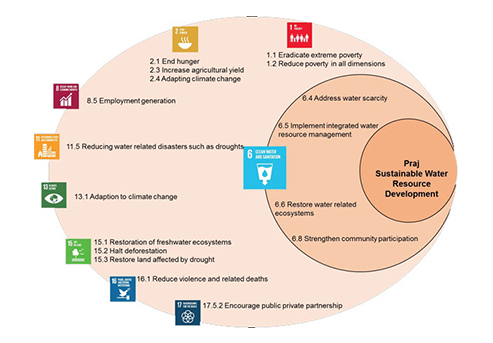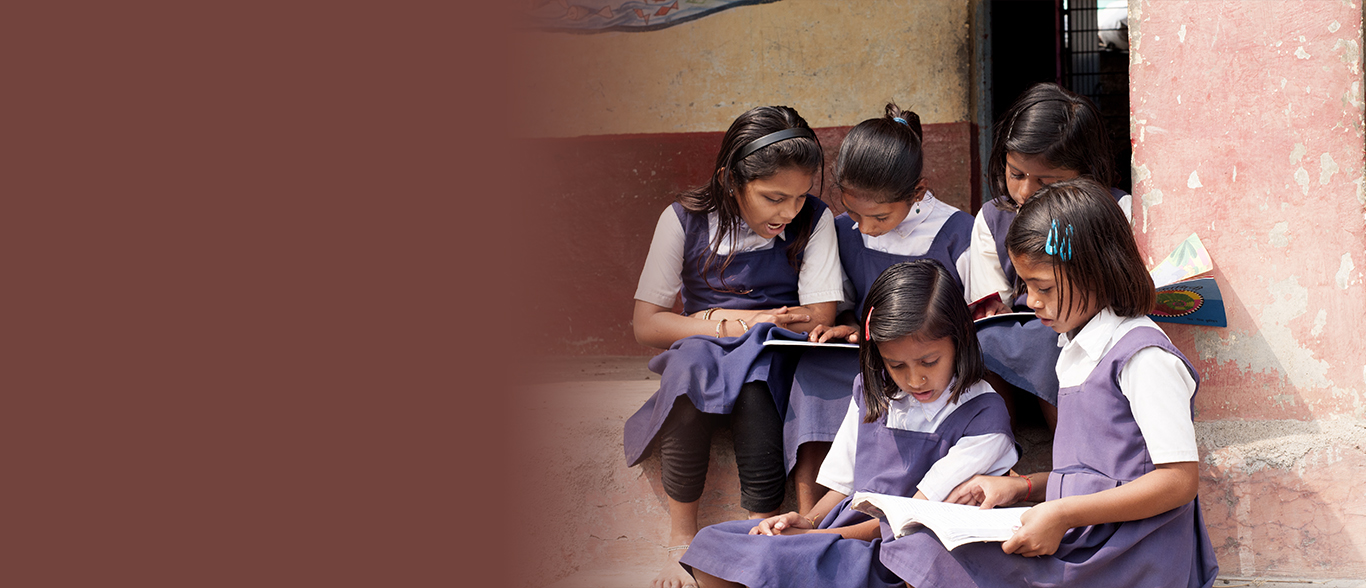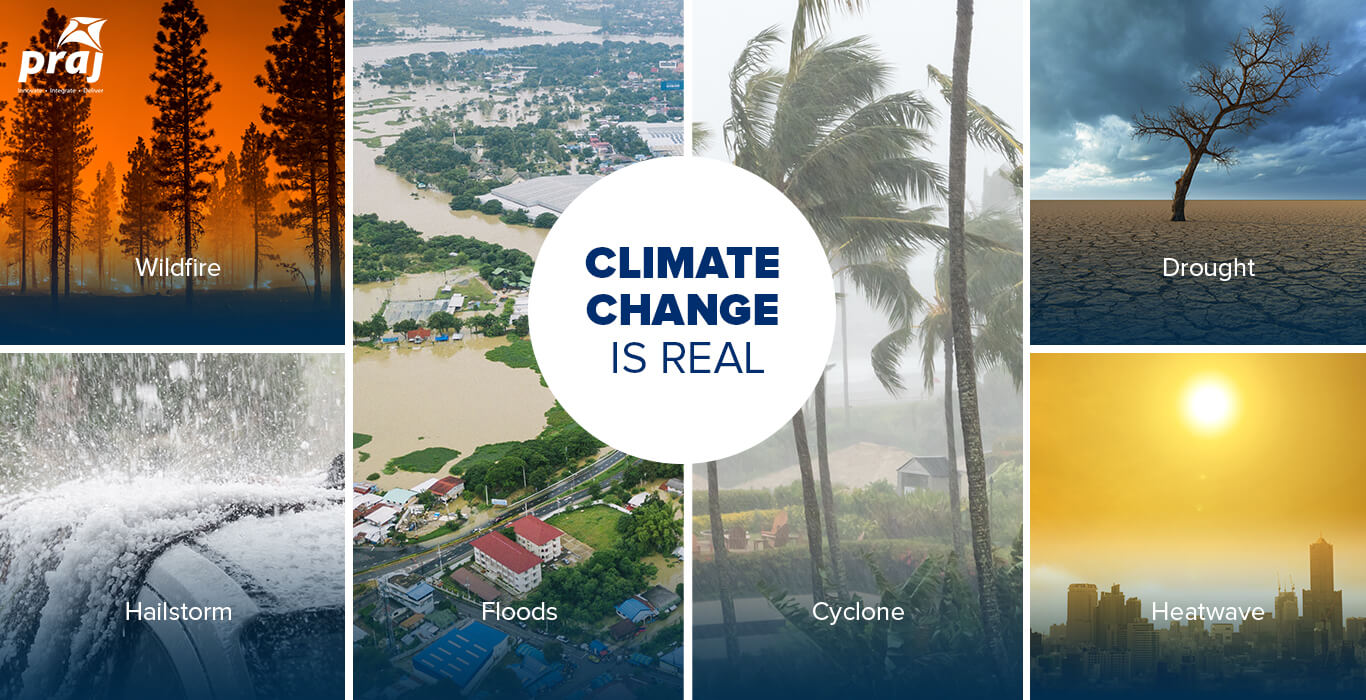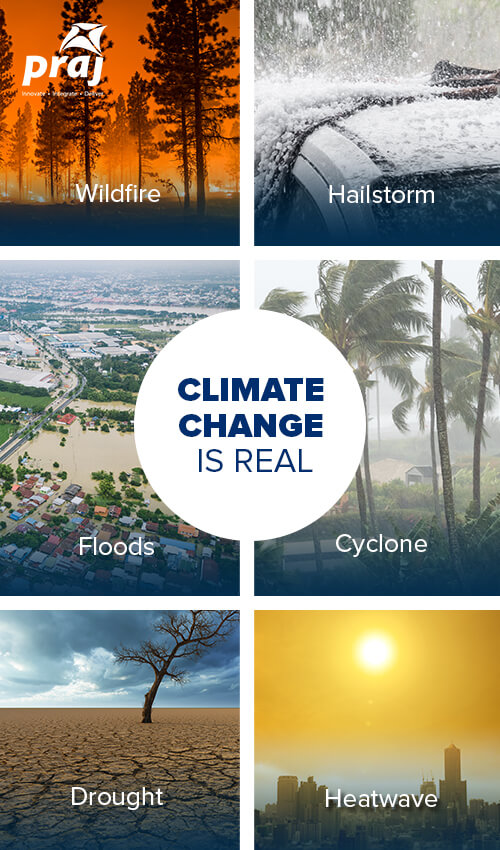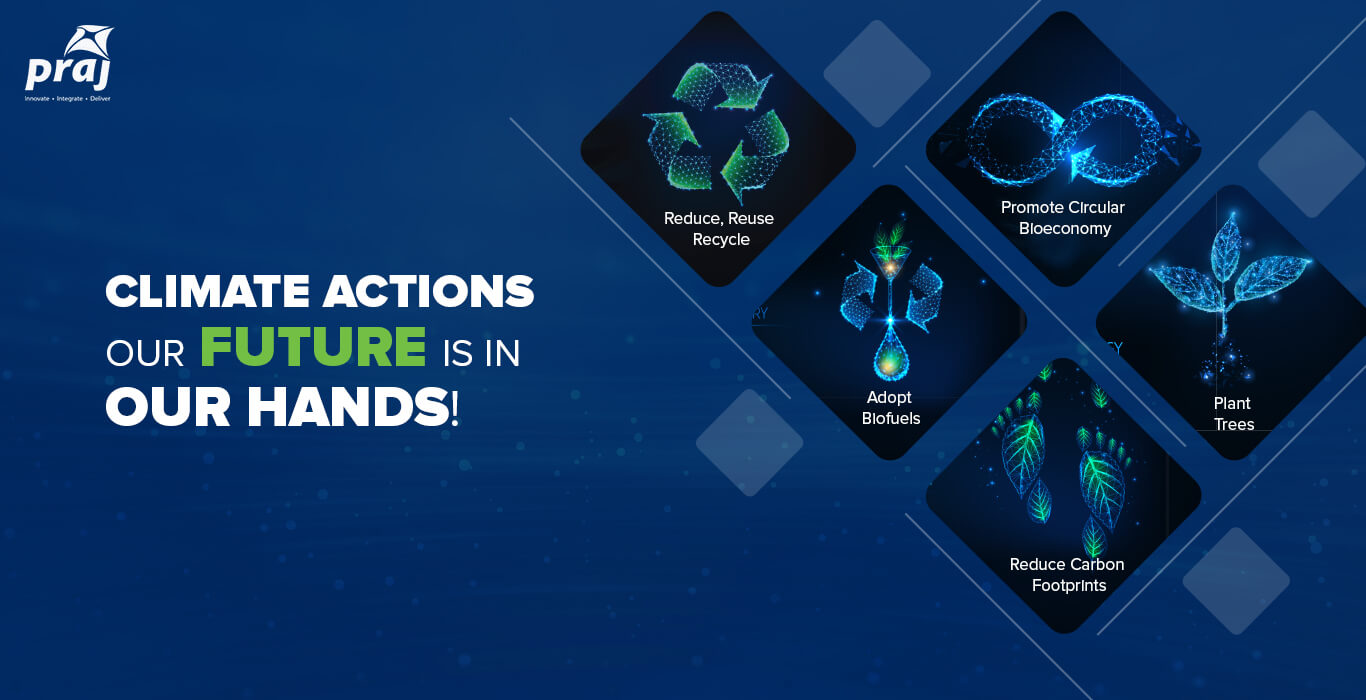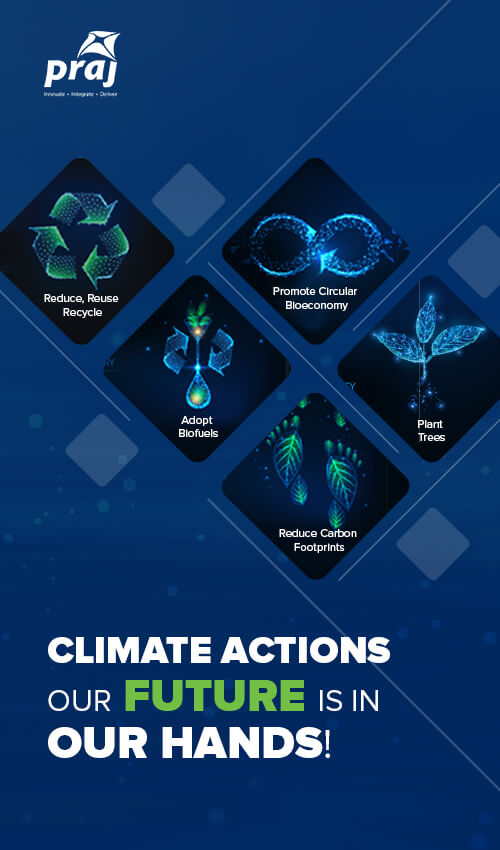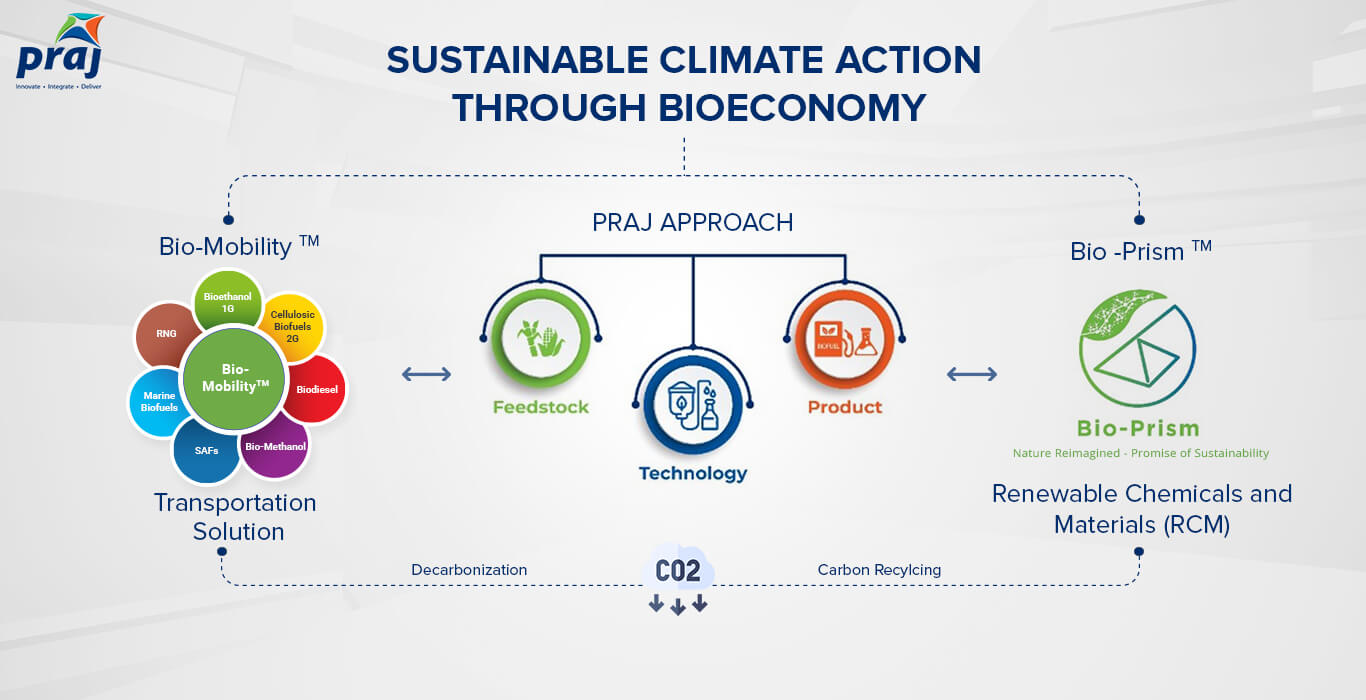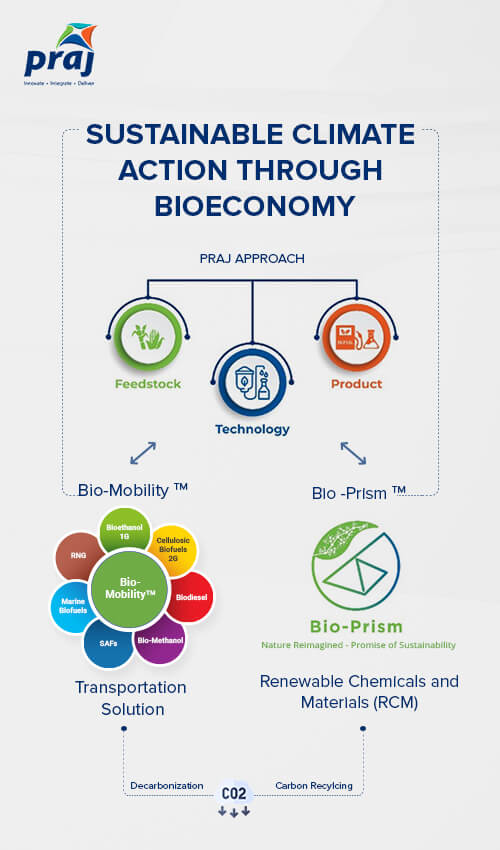A. Background: Water is Enabler for equitable and sustainable socio-economic development.Improved access to agricultural water contributes to improved food security, economic growth, and reduction of poverty. Unfortunately, several parts of Maharashtra have been facing water scarcity since last few years. Many villages from Marathwada region received much less rainfall than the average leading to further lowering of ground water levels, much lower than a decade ago leading to severe drinking water scarcity. Coupled with failure of the monsoon, the hydrogeological characteristics and widespread over exploitation of groundwater resources without replenishing it has also contributed significantly to water scarcity. The water conservation structures especially on the streams have become defunct due to lack of maintenance while majority of streams were full of silt.
The increase in the frequency of droughts in the recent decade has aggravated its impacts on agricultural production. The result being many farmers relying on other forms of livelihood are migrating to cities for employment. The repeated crop failures and surmounting debts is making farming unsustainable. Unable to pay these debts, farmers, unfortunately, resort to committing extreme steps such as suicides. The small and marginal farmers, whose main source of livelihood was farming, were economically devastated. There was an immediate need for initiating a sustainable solution to address this problem of water shortages.
Therefore, to address these important socio-economic issues, in the year 2013, Praj initiated the ‘Sustainable Water Resources Development’ initiative in severely drought affected village Balamtakali, in Shevgaon taluka of Ahmednagar district. The project was implemented in partnership with NGO and participation of the villagers.
The outcome of the interventions was highly encouraging. The village which was getting drinking water every year by tankers from December onwards since last 4-5 years has drinking water available throughout the year, today.
In addition, the decentralised storage of water has enhanced ground water levels and farmers have enough water for their crops and livestock. This has helped in enhancing productivity of agricultural crops and earn additional off-farm income fromlivestock. Due to encouraging socio- economic outcomes of this project, Praj decided to undertake this initiative in more villages and so far we have covered 63 villages spread across 13 talukas of Ahmednagar, Chhatrapati Sambhaji Nagar, Dharashiv, Beed, Jalna and Pune district in association with NGO’s namely Janakalyan Samiti, Ahmednagar, Savitribai Phule Mahila Ekatma Samaj Mandal, Aurangabad, officially known as Chhatrapati Sambhaji Nagar, Vivekanand Youth Welfare Society, Beed, Deepastambha Charitable Trust, Pune and Gram Gourav
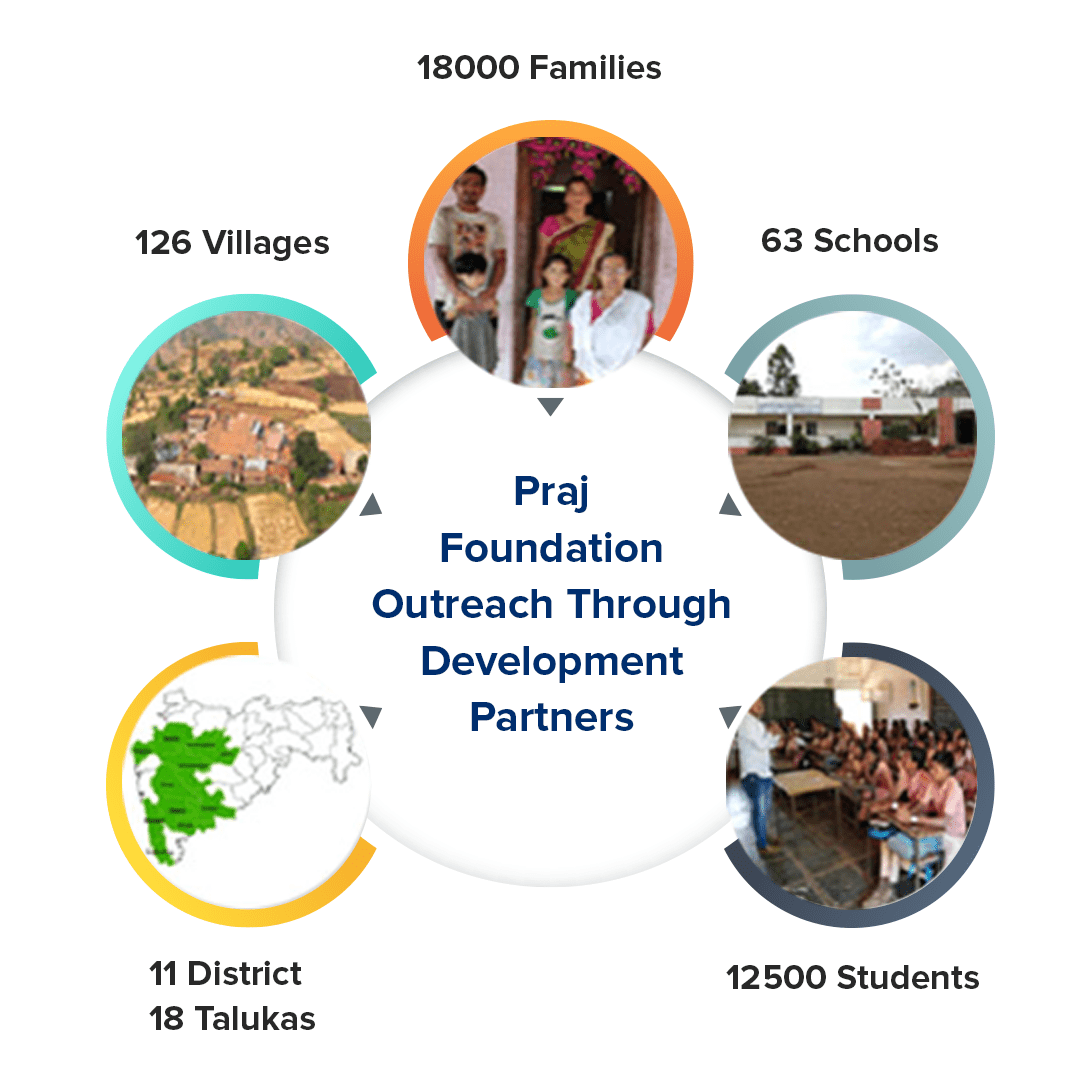
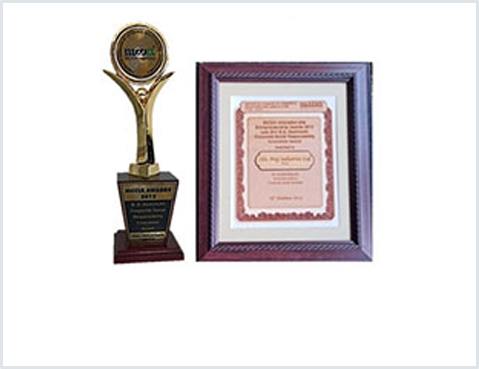
B G Deshmukh CSR Innovation Award 2012

B G Deshmukh CSR Innovation Award 2013

B G Deshmukh CSR Innovation Award 2014

B G Deshmukh CSR Innovation Award 2015
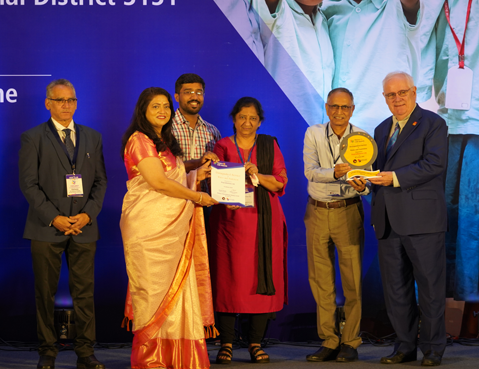
Rotary CSR Award
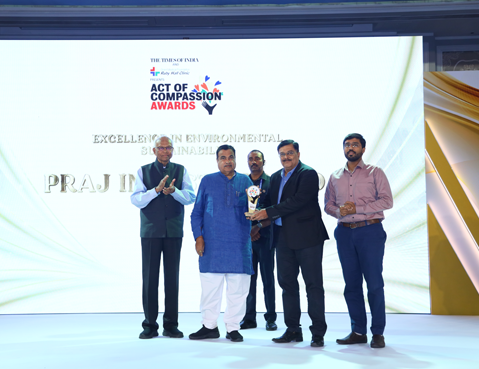
Act of compassion award - Excellence in Environmenrt Sustainability
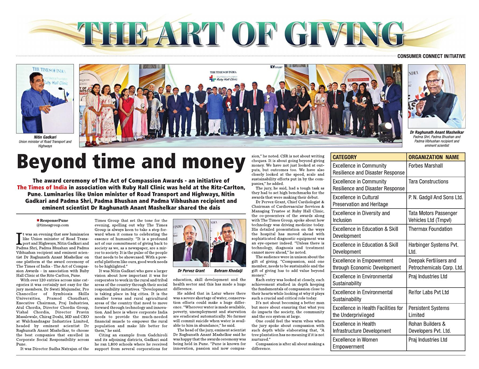
Act of Compassion Award - The Art of Giving
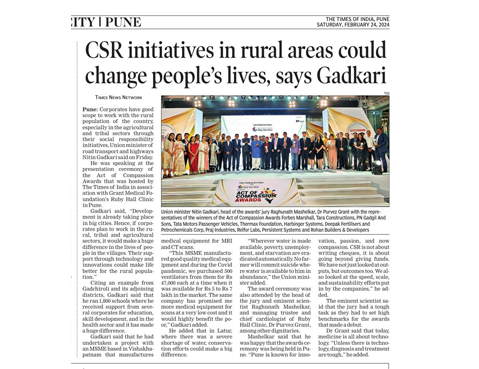
Act of Ccompassion Award - Times on India, Pune Edition
List of villages under ‘Sustainable Water Resources Development Programme
| No. | District | Taluka | Name Of The Village |
|---|---|---|---|
| 1. | Ahmednagar | Shevgaon | Balamtakali, Kharadgaon, Vadule Katewadi |
| Jamkhed | Fakarabad | ||
| Shrigonda | Mandavgan | ||
| Pathardi | Eknathwadi, Mohoj Deovde, Bhutetakli, Koradgaon, Waghdara, Manik Daundi, Aurangpur, Ranjani, Harihareshwar, Malewadi, Shekte, Handalwadi, Sonoshi and Shirapur | ||
| 2. | Jalna | Badnapur | Matrewadi, Padali, Najik Pangari, Dhoksal, Ujjainpuri, Hiwara, Walha, DevPimpalgaon, Dhamangaon, Chikhali, Butegaon, Wanjarwadi, Kumbhari, Kandari khurd and Haldola |
| Bhokardan | Adgaon Bhombe | ||
| 3. | Aurangabad(Chhatrapati Sambhaji Nagar) | Paithan | Antarwali Khandi, Aadgaon Jawale, Georai Marda, Tupewadi Tanda, Dongaon Tambe, Daregaon, Sultanpur, Kadethan Bk |
| Aurangabad | Chaukawadi | ||
| Phulambri | Kolate takali, Ridhora-devi, Georai-gungi | ||
| 4. | Pune | Purandar | Kolvihire, Sakurde, Shivri, Pangare, Satalwadi, Rakh, Wagdarwadi |
| Velhe | Ambed, Khamgaon, Pal, Devpal | ||
| 5. | Beed | Wadvani | Morwad |
| 6. | Dharashiv | Bhoom | Ulup, Varud, Padoli, Walwad |
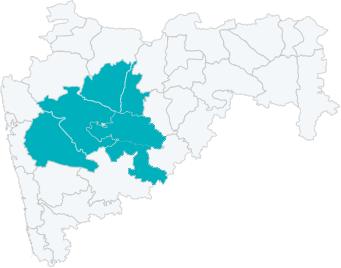
-
11
Pune
-
19
Ahmednagar
-
16
Jalna
-
12
Chhatrapati Sambhaji Nagar
-
4
Dharashiv
-
1
Beed
B. Process of initiating project:
B 1. Alignment of stakeholders:
Project was initiated by conducting series of meeting with all stakeholders such as villagers, NGOs, local leaders etc. to on-board their suggestions and bring consensus. Participatory approach for water resources development and build self-reliance instead of depending only on government assistance was underlying principal of these projects.
The opinion leaders from the village were taken to nearby villages where such interventions of water resources development had shown visible results. These interactions with the farmers from such villages were conducive in convincing the aspirants to arrive at positive decision.
They all committed to contribute at least 20-25% of project cost upfront in addition to providing help in planning, execution and monitoring of project activity. The CSR officials of Praj and the NGO staff were involved right from conceptualizing the project all the way till the targeted results were realized. Various aspects of project across the life cycle were closely monitored by representatives of NGO, Praj CSR team with active participation of local youth. This ensured credibility and helped in effectively tracking of project progress.
Mr. Pramod Chaudhari, Executive Chairman, Praj Industries Ltd. during ‘Bhumi Poojan’ Ceremony at Kharadgaon, District Ahmednagar.
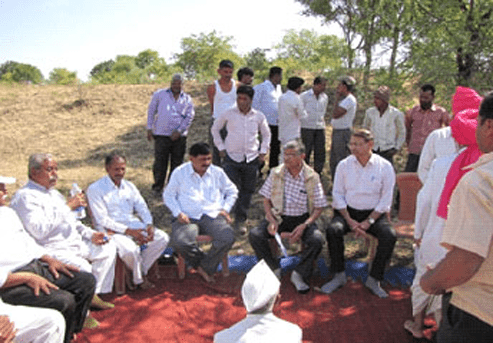

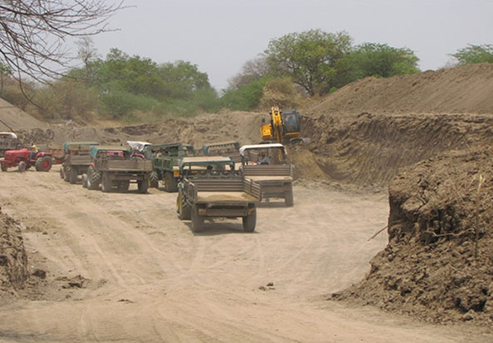
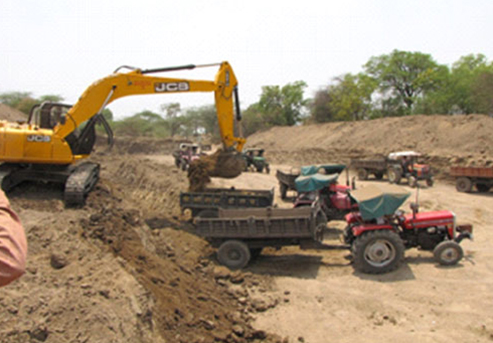
B 2. Project Intervention
Based on the suggestions of Hydro-Geologists following activities were initiated with people’s participation (Physical as well as financial).
- The existing check dam (water impounding structure) on the stream was repaired
- The stream was widened and deepened by removing the silt
The excavated top soil (silt) was deposited on agricultural land to enhance the soil fertility while the soft rock (Murum) was used to strengthening internal village roads.
Though the village identification and creating consensus of villagers was initiated in month of November, the actual execution started from March onwards in the following year.
Depending on the type of intervention, it took about 2-3 months to complete the work.
C. Output
Use of silt to enhance productivity
Total silt and murum excavated from these projects in 63 villages was 27 lakh cubic meters or 6.50 lakh truckloads. The top silt excavated from the stream was transported by farmers to their own field which has certainly benefited them in enhancing productivity of crops.
The silt was also used by some farmers for spreading it on marginal lands which were not cultivated earlier. Due to spreading the silt additional area of 600 acres has come under cultivation.
They all committed to contribute at least 20-25% of project cost upfront in addition to providing help in planning, execution and monitoring of project activity. The CSR officials of Praj and the NGO staff were involved right from conceptualizing the project all the way till the targeted results were realized. Various aspects of project across the life cycle were closely monitored by representatives of NGO, Praj CSR team with active participation of local youth. This ensured credibility and helped in effectively tracking of project progress.
The lower layer excavated from the stream was murum was used for creating 40 kilometres of internal village roads making it approachable during all seasons.

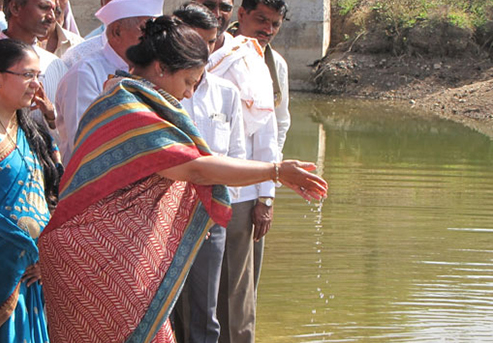
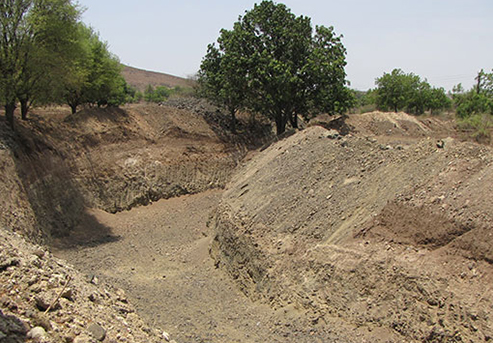
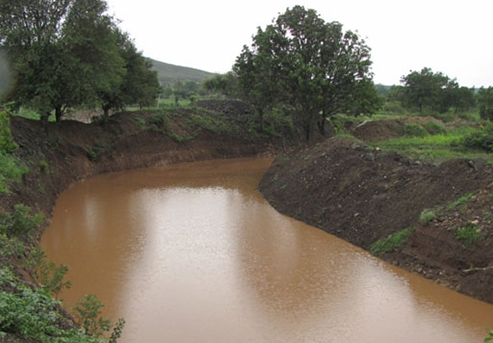
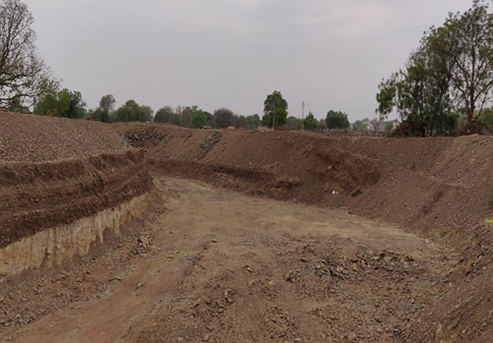
Project outcomes:
| Approx No. of wells benefitted | 2400 |
| Approx No. of bore wells benefitted | 900 |
| Water conserved in a million litres | 7000+ |
| The area under irrigation benefitted | 23000+ acres |
- People’s Participation
- Improved Groundwater table due to Recharge
- Rejuvenation of wells
- Protective irrigation to agricultural crops
- Employment generation and reduced out-migration
- Increased Crop productivity
- Improved livestock productivity
- Investment by various stakeholders
D. Outcomes
People’s Participation
Active Participation of people was single most important aspect of success of the project. The participation was not only monitory, to the extent of 20-30% of total estimated project cost, but was also in form of day-to-day monitoring during implementation and resolving of disputes.D. Outcomes
Improved Groundwater table due to Recharge:
The stored water seeped in ground and helped in recharging the ground water levels. 880 Open wells and 600 Bore wells were recharged leading to year round access to safe and affordable drinking water for all. Today these villages are no more dependent on water tankers.
D. Outcomes
Rejuvenation of wells:
The stored water seeped in ground and helped in recharging the ground water levels. 880 Open wells and 600 Bore wells were recharged leading to year round access to safe and affordable drinking water for all. Today these villages are no more dependent on water tankers.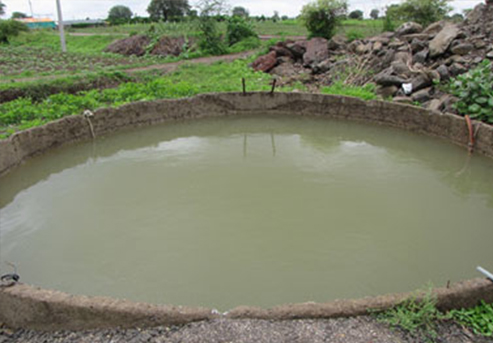
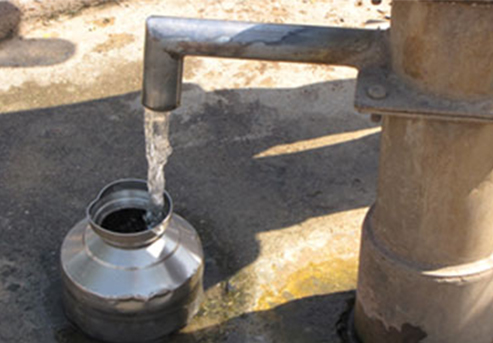
D. Outcomes
Protective irrigation to agricultural crops:
The stored water seeped in ground and helped in recharging the ground water levels. 880 Open wells and 600 Bore wells were recharged leading to year round access to safe and affordable drinking water for all. Today these villages are no more dependent on water tankers.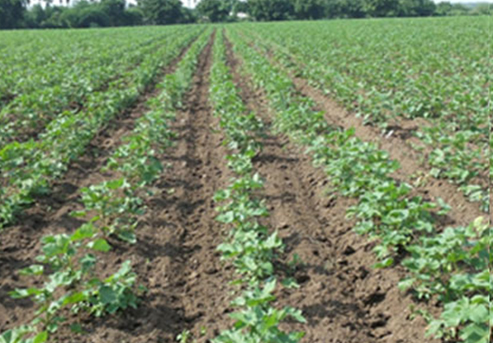
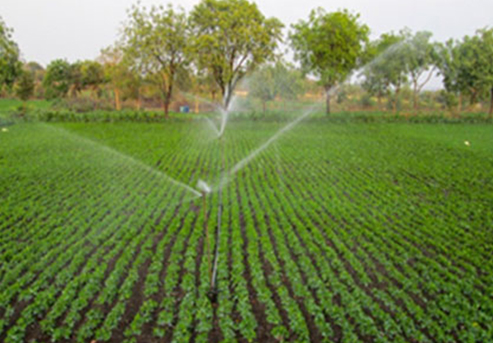
D. Outcomes
Employment generation and reduced out-migration:
The stored water seeped in ground and helped in recharging the ground water levels. 880 Open wells and 600 Bore wells were recharged leading to year round access to safe and affordable drinking water for all. Today these villages are no more dependent on water tankers.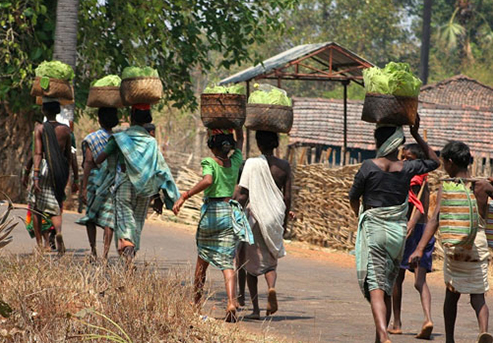
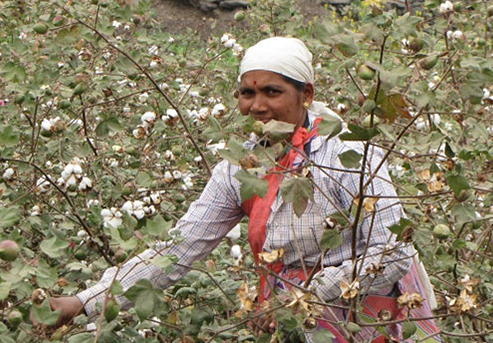
D. Outcomes
Increased Crop productivity:
The stored water seeped in ground and helped in recharging the ground water levels. 880 Open wells and 600 Bore wells were recharged leading to year round access to safe and affordable drinking water for all. Today these villages are no more dependent on water tankers.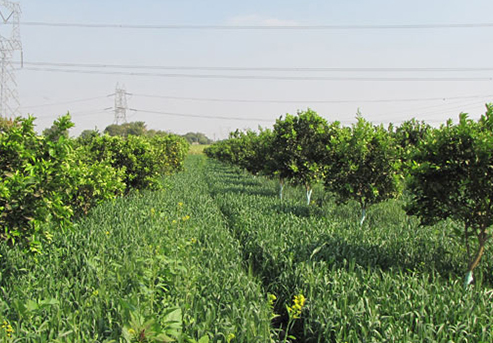
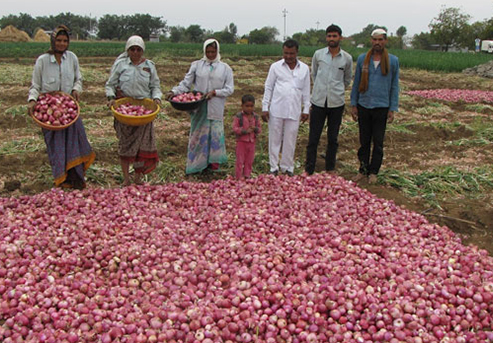
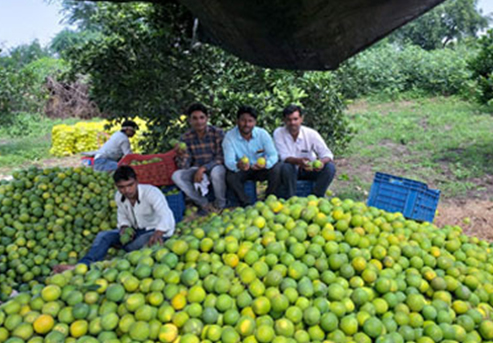
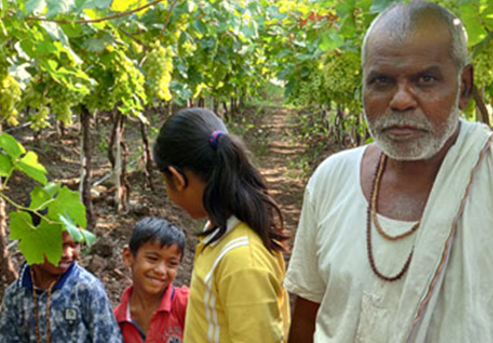
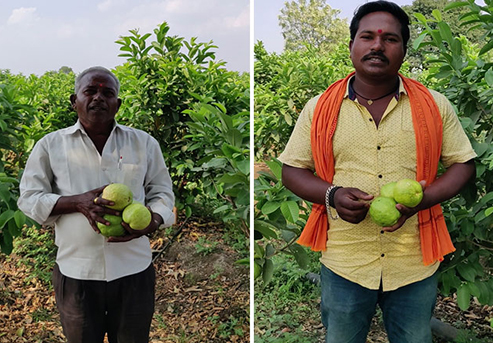
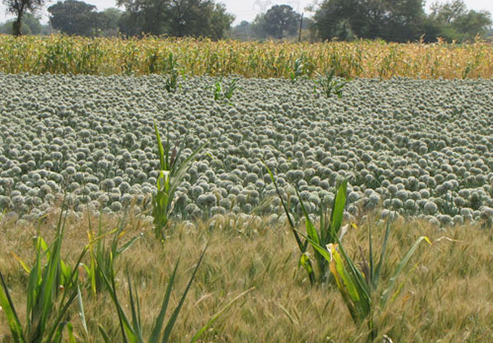
D. Outcomes
Improved livestock productivity:
The stored water seeped in ground and helped in recharging the ground water levels. 880 Open wells and 600 Bore wells were recharged leading to year round access to safe and affordable drinking water for all. Today these villages are no more dependent on water tankers.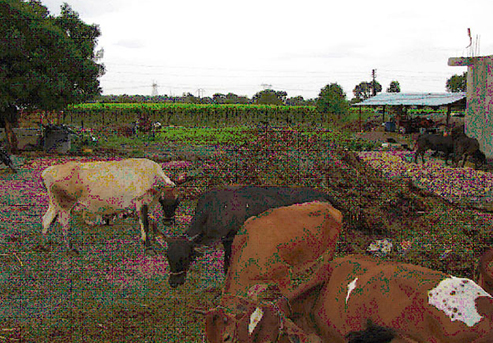
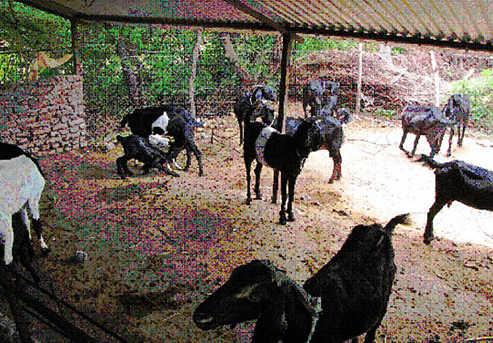
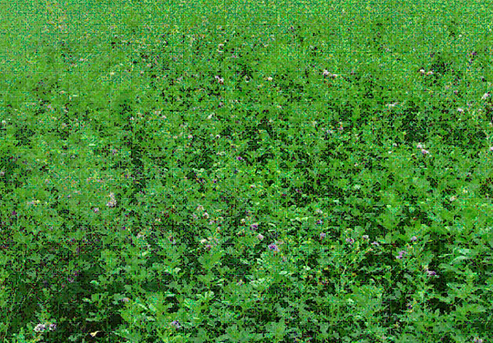
D. Outcomes
Investment by various stakeholders:
The stored water seeped in ground and helped in recharging the ground water levels. 880 Open wells and 600 Bore wells were recharged leading to year round access to safe and affordable drinking water for all. Today these villages are no more dependent on water tankers.